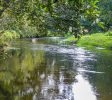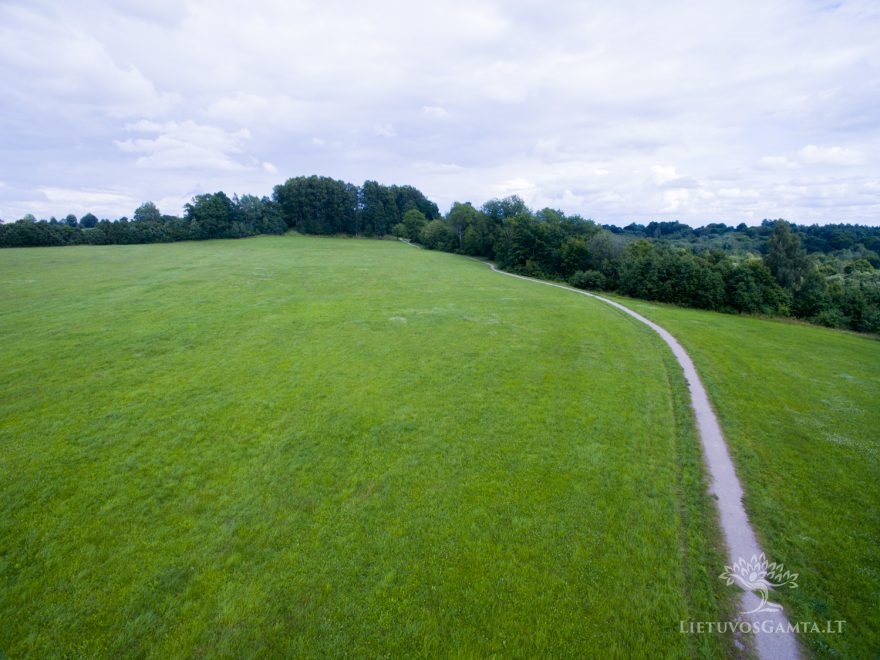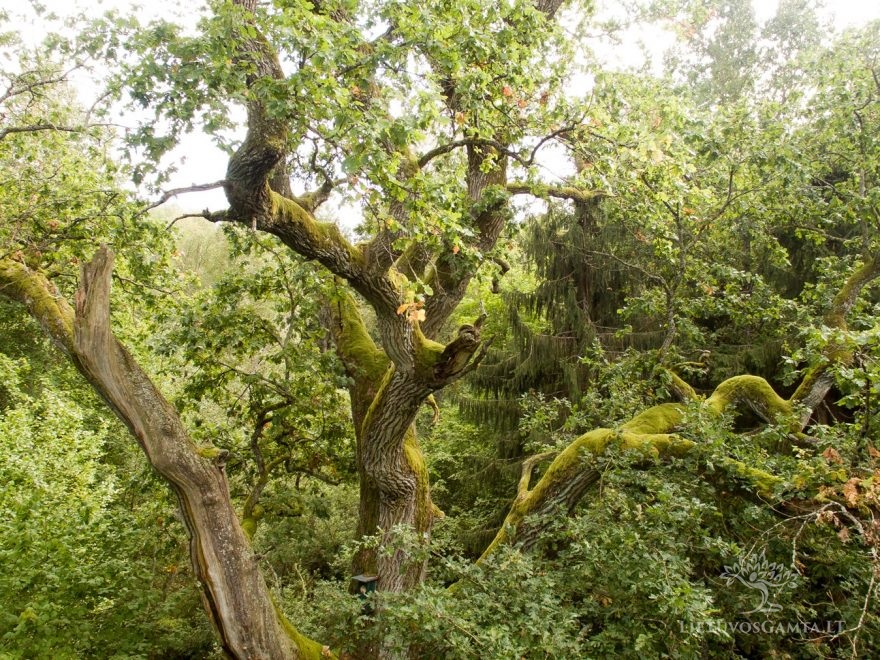Zervynos village settlement
Zervynos village, which is called a pearl of Lithuania, is located in Varena district. Its beauty is extraordinary! This village has developed a century ago, or maybe a bit earlier. But people lived in these surroundings since much more distant past. It is said that Yotvingians lived here in the 13th century, and the first fire to cook food was started using flint in the Palaeolithic era.
Take a walk on a sandy street that stretches through the entire village to admire the homesteads situated on both banks of the beautiful River Ula with its transparent waters. The buildings of these homesteads are often built of recumbent logs that were cut down with an axe only, and the foundations of the farm houses are made of wooden chumps. The village also has unique group homesteads with spacious shared yards. The houses are arranged in these yards according to a scheme created once by the locals. There are also seven extraordinary seven tall crosses in Zervynos village. They, decorated with white “aprons“, stand in the partings of the ways.
The soils in and around Zervynos village are infertile and sandy. For this reason, agriculture has never been the most important occupation here. But the local bee-masters, who were skilled in removing honey from the bee nests located in the tree holes, were very famous! From the very old days bees nested in the tree hollows of the local forests, and later – in the more suitable man-made tree holes. You can still find in Zervynos village old rope devices specially designed to climb up trees where bee nests are located and the people who are skilled to use them. The locals also pick wild mushrooms and berries. Formerly, boletus mushrooms dried by the people of Zervynos village were transported to Vilnius, Warsaw, Petersburg, and today they are sent to a half of all the countries of the wold!
Zervynos is really a beautiful place, and a hill in Zervynos is the best place to admire the beauty of the surroundings: it perfectly overlooks all yards and the winding streets that are called ulycia by the locals! This place attracts lots of visitors. Almost everyday people flow through the village by kayaks on the River Ula that flows through the Zervynos, also cyclists pass by this place. Also the visitors from abroad visit the village and its surroundings. But the village always remains quiet. As the people of Zervynos say, the village is getting old. Even though the traditions of Zervynos village are unique, they slowly vanish together with every deceased person of the village: the local women almost stopped weaving beautiful counterpanes and the local men almost stopped to do crafts in Dzukian way, because very few men left in this place. No cows, no piglets, no horses to plough up fields or to bring firewood from the forest are kept in the village today. Even no dogs running freely on the streets of the village. In fact, the women of the village still meet on the first Sunday of each month, and they gather each time in a different homestead, where they worship and pray the Rosary. The local women, with their heads covered with white scarfs and wearing even whiter aprons, sing the authentic Dzukian songs, welcome the guests and see them off. Juozas Aputis, who lived and created in Zervynos village, always appreciated a silent peace of the place: “…that silences of Zervynos village is fabulous! And those women of Zervynos village… They manage to take care of everything both in terms of their home and of the village. And I find those traditions of the village as a real miracle…”
Zervynos village was also noticed by the creators of Lithuanian movies. And many people of Zervynos are the characters of these movies. Some people still talk with pride that not an ordinary person, but the Actor stayed at their home! And they got potato in return for allowing the guests to use their fields to place the film decorations. In 2010 Zervynos village was declared a state-protected cultural heritage object for its uniqueness, cultural value of its ethnoarchitecture and connection with the nature as well as authenticity of the environment.















































































